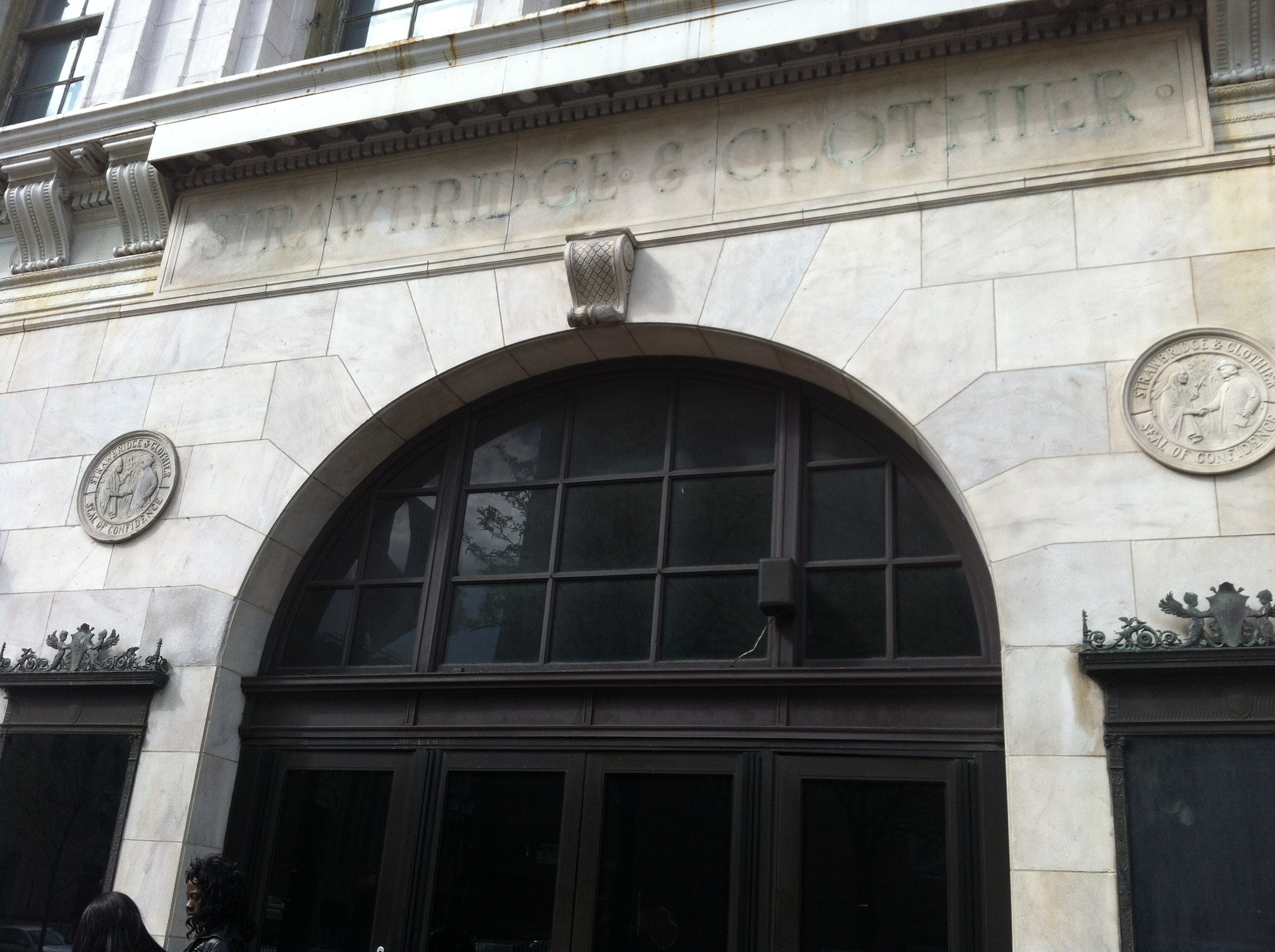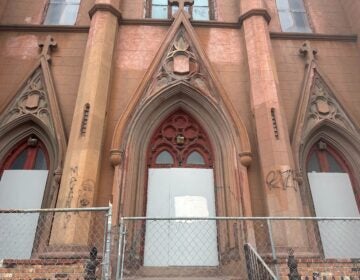Historical Commission approves canopy on new Inquirer/Daily News headquarters, denies church adaptive reuse

Two cases consumed the bulk of Friday’s Philadelphia Historical Commission meeting, while at the same time shining a spotlight on the issues raised when new uses are found for old structures such as, in today’s instances, a department store and a church.
The first concerned a proposal by the publishers of The Philadelphia Inquirer, Daily News, and Philly.com to install a new canopy, used for branding identification, on the older part of their new location, the former Strawbridge & Clothier department store on the 800 block of Market Street.
In response to suggestions made by the Commission’s Architectural Committee, the applicants came back with a scaled down marquee (now proposed to project 4 feet into the street instead of the original 6 feet). Although Committee Chair Dominique Hawkins would ultimately vote to deny this new proposal at today’s meeting, she praised it for addressing the concerns of the Committee while questioning whether such a marquee was appropriate at all.
Much of today’s debate, however, centered on the mysterious case of the missing letters that originally spelled out the name of the department store. (See Ashley Hahn’s thoughts about this here.) The applicants and some Commission members questioned whether the issue was relevant, since the building’s owners, PREIT, asserts it doesn’t have the letters, it didn’t remove them, and it has no right to use the name.
But several public speakers emphasized that the discussion was relevant. Preservationist Howard Haas said “no new signage should be approved until the old sign is resolved.” He praised the “emotional bond” offered by what had been an “amazing business,” and asked that the Commission “insist that the building’s signs be returned” or replicated in recognition of the importance of the structure’s original purpose.
John Gallery of the Preservation Alliance questioned the idea that restoring the original sign would send a mixed message. No one goes into a store nearby expecting to have their “hat trimmed for free” or into the Loews Hotel to make a bank deposit, he said, alluding to the former uses (and extant signs) of the Lit Brothers and PSFS buildings.
In the end, though, any further discussion of the ghost sign was tabled and the amended proposal was approved.
The Commission gave even greater attention to the matter of adapting the 1926 Welsh Presbyterian Church, listed as significant in the Spring Garden Historic District, into eight (or more) apartments. The proposal calls for the demolition of the rear bay of the church, about 18 1/2 feet of the building or 20-25% of its total structure.
According to attorney David Orphanides, who was accompanied by the plan’s architect, Rustin Ohler of Harman Deutsch, the demolition is necessary to make room for rear yard zoning requirements. (Although no one brought this up, after August, that argument will actually be moot because the new zoning code does away with rear yard space requirements and instead ties the allowable number of units to the overall lot area — a different story entirely.)
A discussion followed about whether the proposal should be termed an “alteration” or a “demolition” (and thus subject to differing standards) and whether or not the work would impact on the public’s experience of the building’s exterior and/or its character.
Seven neighbors, as well as Gallery, spoke in opposition to the proposal, calling it a “naked attempt to sidestep the zoning board,” likening it to the ongoing Dilworth House debacle, and claiming that the corbels and chimneys that would be removed did indeed contribute to the overall character of the church.
Commissioners also batted around the idea of waiting until the project went before the Zoning Board of Adjustments, but Commissioner Sara Merriman said she was uncomfortable with “deferring” to the ZBA and that use “should not be a factor for us.”
Commissioner Hawkins put forth a motion of denial, stating that the application was for a demolition and that the information submitted was still insufficient. That recommendation was supported by the majority of commissioners, with Commissioner Robert Thomas abstaining, because he said he was on the fence about the distinction between “alteration” and “demolition.”
Contact the reporter at jgreco@planphilly.com and follow her on Twitter @joanngreco
WHYY is your source for fact-based, in-depth journalism and information. As a nonprofit organization, we rely on financial support from readers like you. Please give today.




